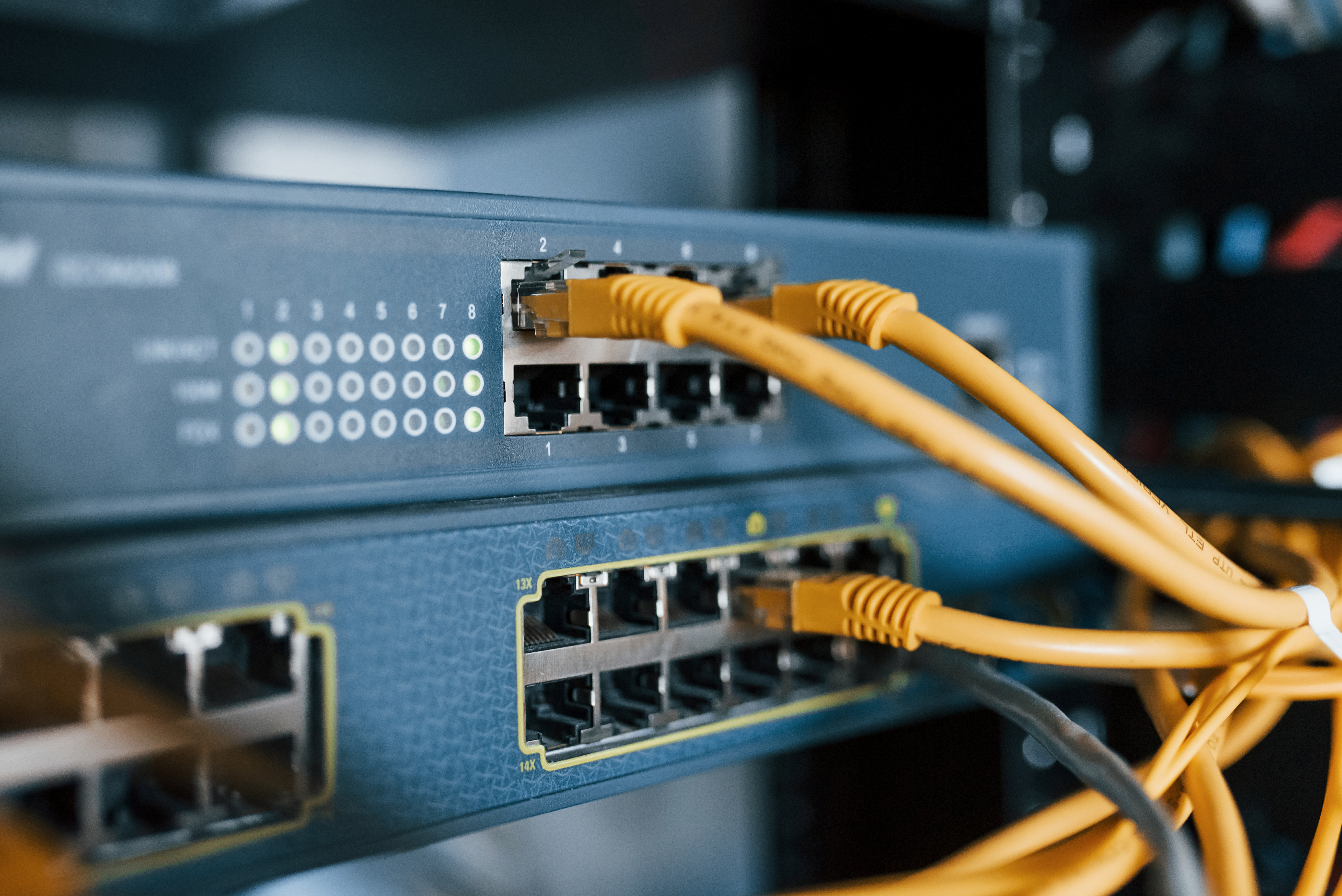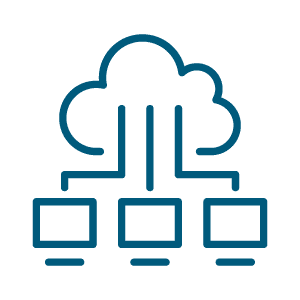Understanding the basics of cloud infrastructure: What you need to know
The cloud has become a ubiquitous force in the modern computing landscape: End-user spending has reached around $591.79 billion per year. To put that into perspective, that's more than the GDP of New Zealand and Peru combined.
A basic understanding cloud concepts makes it easy to see why it's such a hot tech tool. Cloud infrastructure enables you to use computers in a remote data center instead of your desktop or laptop. Instead of having to install and maintain applications, storage and beefy processors at your place of business, you can rely on a cloud provider to provide these for you. This allows you to access your computing anywhere you have an internet connection.

In today's digital landscape, cloud computing gives businesses the agility to digitalize core elements of their operations without having to pour money into on-premise hardware. Then, their employees can access the apps they need from anywhere in the world.
What is cloud infrastructure?
Cloud infrastructure refers to using computational resources in data centers instead of at your business or home.
When compared with traditional IT infrastructure, a cloud environment is often less expensive because you don't have to purchase and service your own hardware. It's also more versatile and scalable because you can add users, applications and processing power simply by asking your cloud provider for more resources.
Components of cloud infrastructure
Cloud infrastructure, in many ways, is very similar to what you would set up at your place of business, with a few exceptions.

Hardware
Physical servers are at the heart of a cloud setup in a data center. Like on-premise servers, these send and receive data to computers connected to the cloud.
Also, like traditional computers, all cloud infrastructure examples use:
-
Memory, such as Random Access Memory (RAM), temporarily stores data a computer needs to access.
-
Storage refers to longer-term data storage, such as what you get with a solid-state drive or hard drive.
-
Processors are the brain of a cloud computing system, managing how each component works and executing your instructions.
-

Learn Cloud Security
Get hands-on experience with cloud service provider security, cloud penetration testing, cloud security architecture and management, and more.
Virtualization
Virtualization is the foundation of cloud computing in that it takes computational resources and makes them available remotely. So, instead of having to maintain a computer in your office, you can connect to virtual networks and have access to hundreds of processes and applications.
This enables remote access because anyone can sign on via the internet, open up the apps they need and get to work.
Storage
Storage maintains and secures the data apps need to work. Some common types of storage include:
-
Data backup: A data backup system gives you duplicate copies of files you need to avoid business interruptions or the loss of critical information.
-
Block storage: With block storage, your data gets divided into blocks. Each block has its own identifier so processes can easily access it.
-
File storage: File storage adds structure to your storage system, organizing data according to type and purpose.
-
Object storage: Object storage manages data by putting it into objects. Applications then access these objects and use them to perform their functions.

Network
The network in the cloud enables you to share resources between users, different locations and applications. The cloud serves as your networking hub, enabling you to share across geographical regions and between different apps.
Cloud infrastructure vs. cloud architecture
Cloud infrastructure and cloud architecture are two different things, even though you may see them used interchangeably. Cloud infrastructure refers to the components involved in cloud computing, while cloud architecture is the design of your cloud environment.
In a way, cloud infrastructure and architecture are a lot like a house. The infrastructure of your home includes its electrical and plumbing systems, its frame, windows, doors and other components. But the architecture of your home is its design. The cloud is no different. For example, someone can design cloud architecture without building a cloud infrastructure.
At the same time, as is the case with a house, infrastructure and architecture work together. A cloud architect designs the best cloud computing solution for a specific user or company, and then a cloud infrastructure engineer or cloud security engineer puts the components in place to turn that architecture into your computing "home."
Benefits of using cloud infrastructure
There are a variety of cloud infrastructure benefits, making it ideal for a vast variety of business and personal uses:
-
Cost-effectiveness: It often costs less to use cloud apps and systems than it would to purchase them yourself.
-
Flexibility and scalability: The cloud can be changed to fit your computing needs, and it's easy to add or subtract users, resources and applications.
-
Efficiency and speed: With the cloud, you have the exact resources, such as processors and storage units, you need to optimize the speed and quality of your computing.
-
Enhanced security measures: With the cloud, you get top-of-the-line security guarding your digital assets. You also don't have to worry about installing your own updates and downloading the latest security tech because your cloud provider takes care of that for you.
Limitations and challenges
Computing in the cloud also comes with some potential drawbacks that could impact how you use it or how you choose to enter the cloud computing profession. For instance, cloud technology changes very quickly, so it may be difficult to keep up with the latest innovations.
You also need a very strong network to enable users to access the processes they need to do their work. Otherwise, there may be latency or dropouts that could significantly impact your business.
Also, because your computing is in the hands of another entity, there's always the chance you could lose control of your data. For example, if your cloud contract ends, you may not be able to access certain data until you renew it.
Learn Cloud Security
![]()
Cloud infrastructure delivery models
Depending on how you want to use the cloud, you may prefer one or more of the following delivery models:
IaaS (Infrastructure as a Service)
With IaaS, you get virtual computers that you can rent on a subscription basis. This gives you a lot of flexibility because you can choose the kinds of virtual computers you need. Your cloud provider also takes care of the software installation and maintenance for you.
PaaS (Platform as a Service)
With PaaS, you get a comprehensive software development platform you can use to build, test and deploy software in the cloud. Instead of having to acquire and support vast computing resources in-house, you can design and launch applications using servers in a cloud data center.
SaaS (Software as a Service)
SaaS refers to applications that run in the cloud. It's equally common for both business and personal use cases. For instance, Gmail is a cloud-enabled email, and Google Docs is a cloud-based storage and document creation app. You access SaaS apps using a cloud portal that you must log in to.
Cloud infrastructure in different architectures
The way you use the cloud typically comes down to three different cloud systems: private cloud, public cloud or hybrid cloud.
Private cloud
With a private cloud, an organization has its own, dedicated cloud resources. This could involve servers hosted at your place of business or somewhere else. Your entire cloud is singularly dedicated to your business alone, so you don't have to share processing power, storage or other resources.
Public cloud
With a public cloud, you rely on third-party cloud infrastructure services to give you resources that you access via the internet. For instance, Google Drive operates via a public cloud setup, as does Microsoft Teams and many other common business apps.
Hybrid cloud
As the name indicates, a hybrid cloud environment uses a combination of private and public cloud infrastructures. For example, you may have a business app that you host on a server sitting in your office. At the same time, you may have a software development team that's building an application in the cloud using a platform-as-a-service (PaaS) delivery model.
Impact on cybersecurity
Cloud infrastructure can significantly enhance your cybersecurity because your cloud provider uses the latest tools to protect your digital resources.

For example, with a traditional, on-premise computing infrastructure, an inside attacker may be able to simply slip a USB drive into someone's computer that installs malware. With the cloud, your provider uses firewalls and intrusion detection systems to prevent unauthorized individuals from accessing your systems.
As is the case with many technologies, the cloud isn't without risks. Because you have a range of computing systems under a single roof, one successful attack could affect many different business functions.
This is why it's important to choose the right cloud service provider, especially when it comes to security. Some may have stronger security protocols in place than others. For example, you should make sure that a cloud provider uses the most recent encryption algorithms. If they use dated algorithms that hackers may have already found a way to break, your data could be at risk.
It’s also important to have a security awareness training program that teaches cloud security facts and best practices.
Best practices for efficient cloud infrastructure
To maximize your cloud experience, you can use the following best practices, ranging from using the latest tech to predicting and preventing potential issues:
-
Strategic planning and policy focus: Instead of purchasing a portfolio of cloud resources that may cover many bases, it's best to set up a strategic plan and only get what you need to turn it into reality. Similarly, your internal policies regarding security, data-sharing, and employee expectations should drive the cloud services you opt for. Cloud training should also play a role in your strategy.
-
Researching and selecting the right cloud solutions: As mentioned above, some cloud providers may have better security in place than others. Similarly, one cloud service may do a better job with PaaS or IaaS than another, for example, so you want to do your research before signing on the dotted line.
-
Utilizing modern tech: You can use AI and other modern technology to get the most out of your cloud usage. AI tools can empower you to automate cloud-based processes, adding efficiency to your operations.
-
Governance and risk mitigation planning: You want to choose a cloud provider with data and security management protocols that match your governance and risk profile. For example, a healthcare organization may need encryption and data storage systems that align with the Health Insurance Portability and Accountability Act (HIPAA).
Migrating to the cloud
Performing migrations is one of the more common cloud infrastructure jobs. Migrating to the cloud often starts with checking out the major players in the cloud business. For instance, Amazon Web Services (AWS), Azure, and Google Cloud. While all three of these cloud computing services offer comprehensive cloud platform and infrastructure security, there are differences you should be aware of:
-
AWS is known for its extensive marketplace and ability to provide you with many additional services.
-
Azure has a reputation for making it easy to integrate multiple Microsoft products with each other.
-
Google Cloud is known as a strong solution when it comes to open-source tech and gives you the ability to integrate processes across Google Workspace.
As you choose your provider, it's best to consider what you're going to use it for. For instance, if you rely heavily on Microsoft Teams, Outlook and SharePoint, you may lean more towards Azure than Google Cloud.
As you migrate, it's also crucial to examine the costs. Some businesses may need many virtual machines, extensive data storage, and high network bandwidth, for instance. All of these can push your migration costs higher.
Learn Cloud Security
![]()
Get started with cloud computing now
Whether you're considering signing up for cloud services or working in the cloud industry, understanding cloud infrastructure opens a range of possibilities. As a business leader, you can optimize and automate core processes, saving time and improving productivity. As a practitioner, cloud computing is one of the most in-demand skills. According to the ISACA State of Cybersecurity 2023 report, cloud computing is the second-largest skill gap among cybersecurity professionals, behind only soft skills.
As the field evolves, it’s important to have a solid understanding of cloud computing fundamentals — and cloud infrastructure certifications can help with that — but ongoing cloud training is also essential to stay on top of the latest skills and technical developments.







